Do you know any kids who love to explore and discover? Nature lover and environmental educator Linda Jane Keegan gives a rundown of New Zealand native species identification guides and other non-fiction nature books.
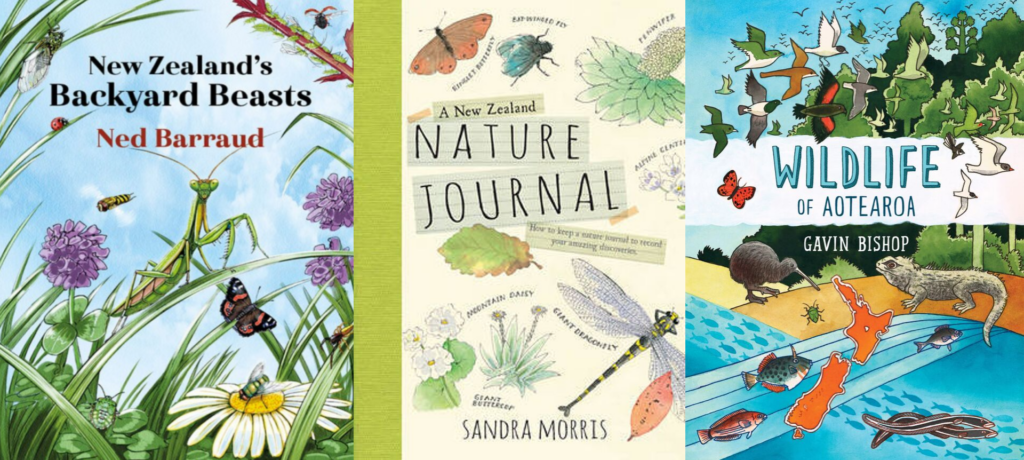
When I was a kid, I wanted to make a booklet of flowers and weeds found in my parents’ suburban garden. Sadly I gave up this fine endeavour, because I struck the tricky problem of how was I going to figure out which flowers were flowers, and which flowers were weeds. But this idea of wanting to categorise and know what things are never went away, and it’s something I wish I had cultivated earlier. It’s never too late though, and I now have both children’s and adult identification books in my collection. If you know a kid who thrives on discovery of the world around them, these are some excellent books to send their way.
In my mind, you can’t talk about New Zealand nature guides without talking about Andrew Crowe. He is an award-winning author with over 40 books under his belt, though I can only claim to own a fraction of these gems. Hunting in rockpools is one of my favourite childhood memories – Dad turning over the rocks so we could see crabs scuttling away in all directions. It’s still a favourite activity now. Andrew Crowe’s Life-Size Guide to the New Zealand Beach (Penguin) includes all the usual suspects – starfish, crabs, barnacles, insects, shells, jellyfish, corals, sea squirts, sponges, seaweeds – as well as different sand types, pebbles, and footprints. Even washed-up rubbish gets a page.
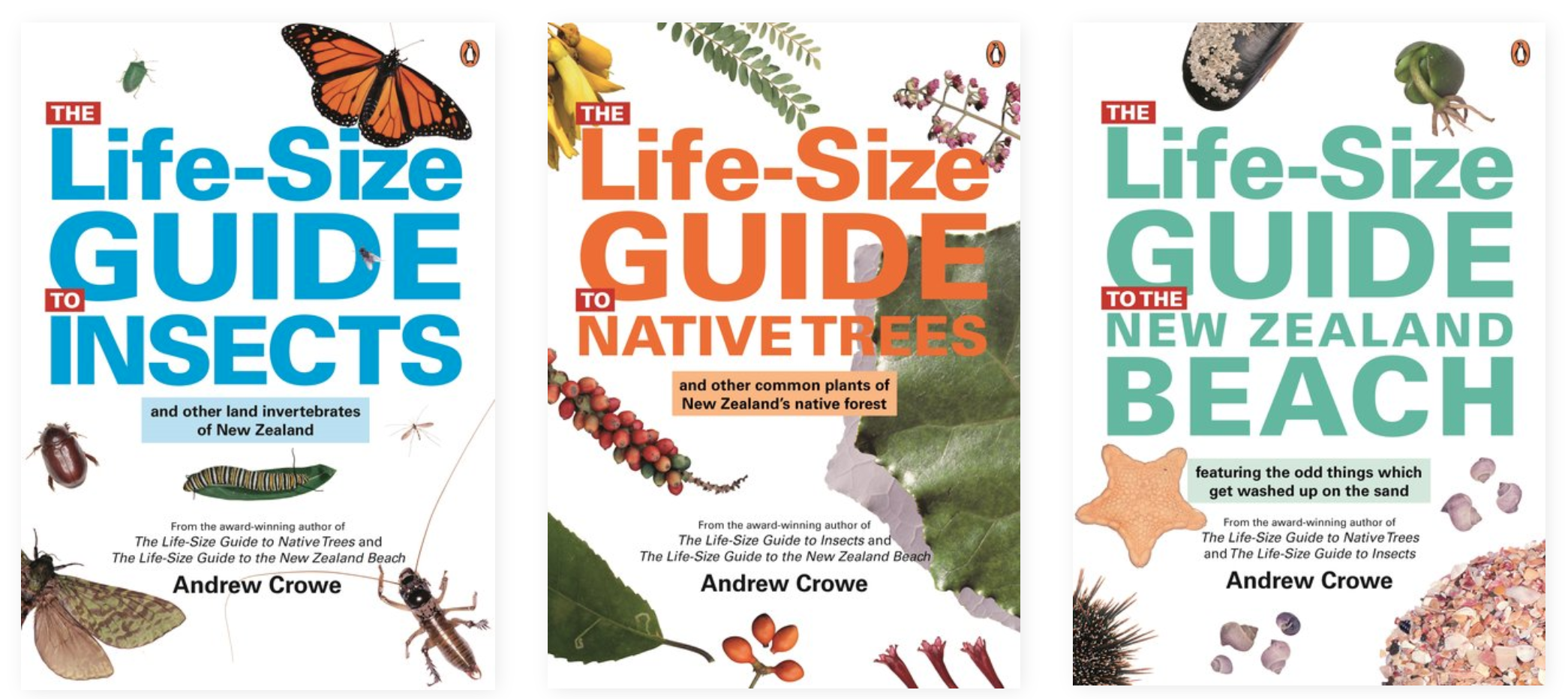
Although limited in their scope, the Life-Size Guides show a wide range of the most interesting and most common species, as well as different aspects of their identity. The Life-Size Guide to Native Trees, for example, covers leaves, flowers, berries, seeds, trunks and bark, climbing plants, and the forest floor.
This series is a great taster for identifying species for all ages; photographs dominating the pages are accompanied by species names and short descriptions to be accessible for younger audiences as well as still appealing for older kids and adults. The other books in this series cover insects, ferns, and wildflowers.
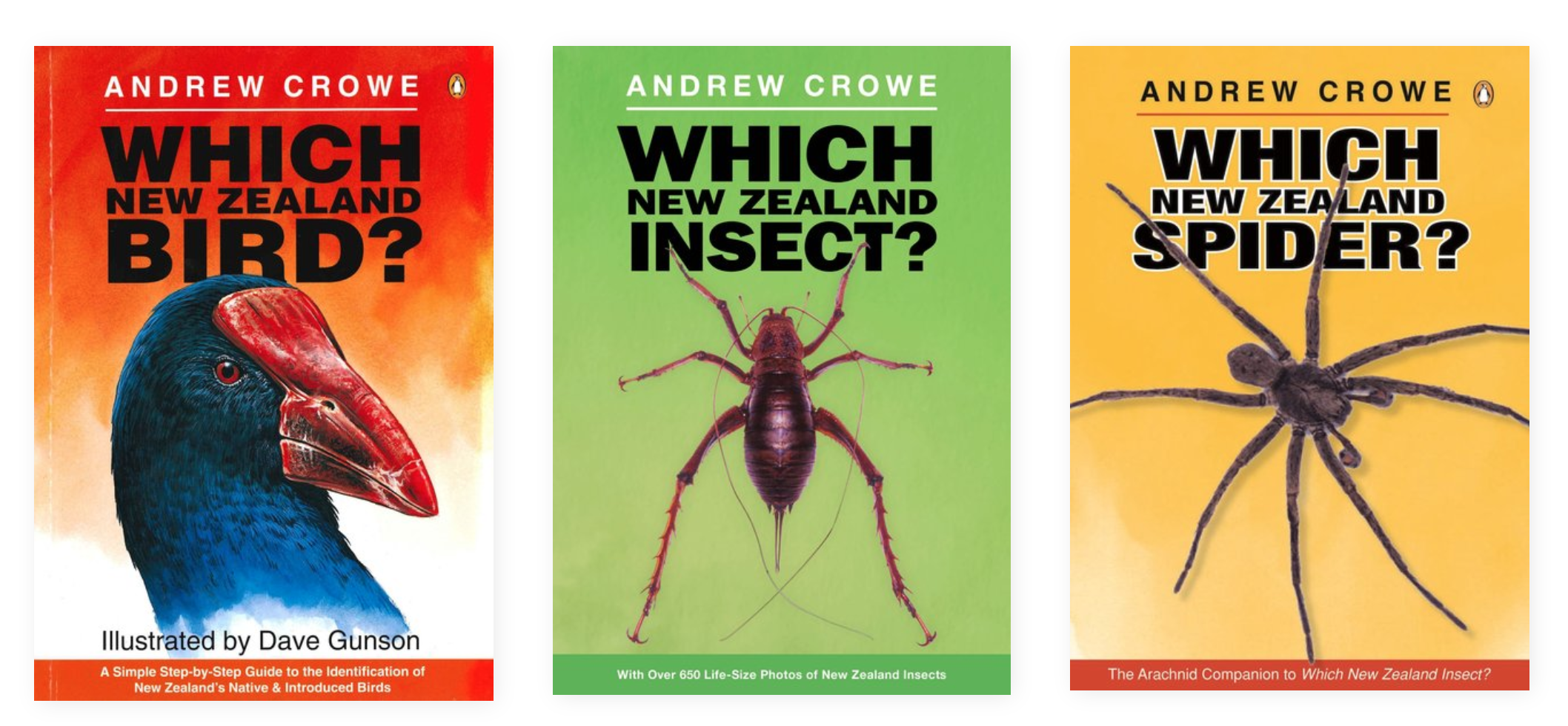
For a much larger range of species, the Which New Zealand…? or Which Native…? series, also by Andrew Crowe, are the next step to start comparing similar species. Which New Zealand Insect? (Penguin) has over 650 life-sized photos – more than triple the number of species shown in the Life-Size Guide version. It also has a handy ruler on the back! Again, I would recommend this guide, and the others in the series, for adults as well as children. They cover trees, forest plants, ferns, spiders, and birds. Which New Zealand Bird? (Penguin) is the only one with illustrations rather than photos, drawn by Dave Gunson, who has also put out a number of his own books on New Zealand species (more on those later!).
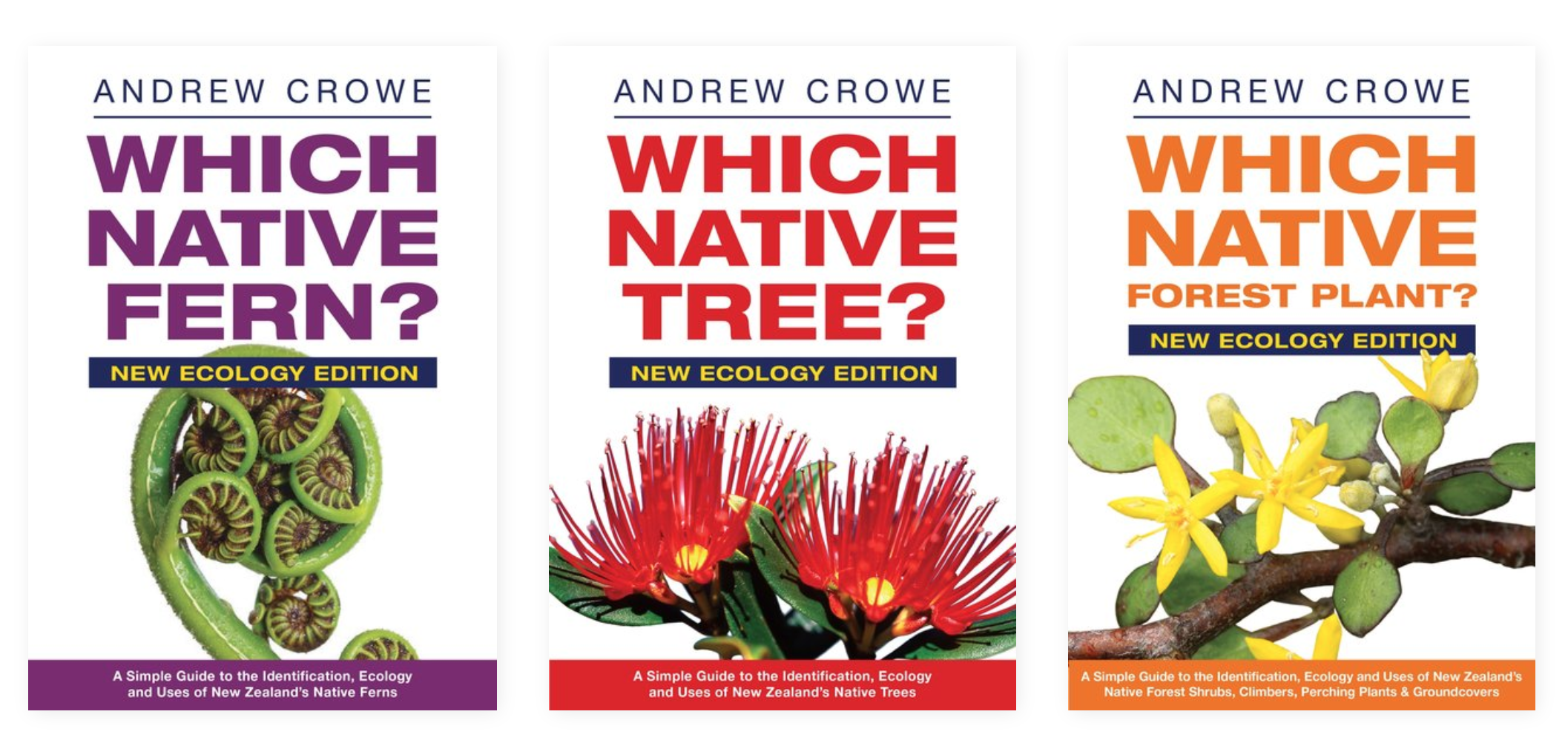
There is certainly no lack of New Zealand bird books for children if you want to focus on certain species, many of which were covered in Anushka Perinpanayagam’s piece Does Your Bird of the Year have a Book?
It’s worth mentioning the tiniest guides in the Andrew Crowe canon: A Mini Guide to the Identification of… series. At 56 pages apiece, and not quite 9 x 12.5cm, they are handily pocket-sized without skimping on identification and distribution information. Obviously, they are limited in detail and the number of species they present, but then you can carry around a few different books without being too weighed down. As an adult I have hefted around multiple large volumes in the field, but I don’t think kid-me would have been quite so keen!
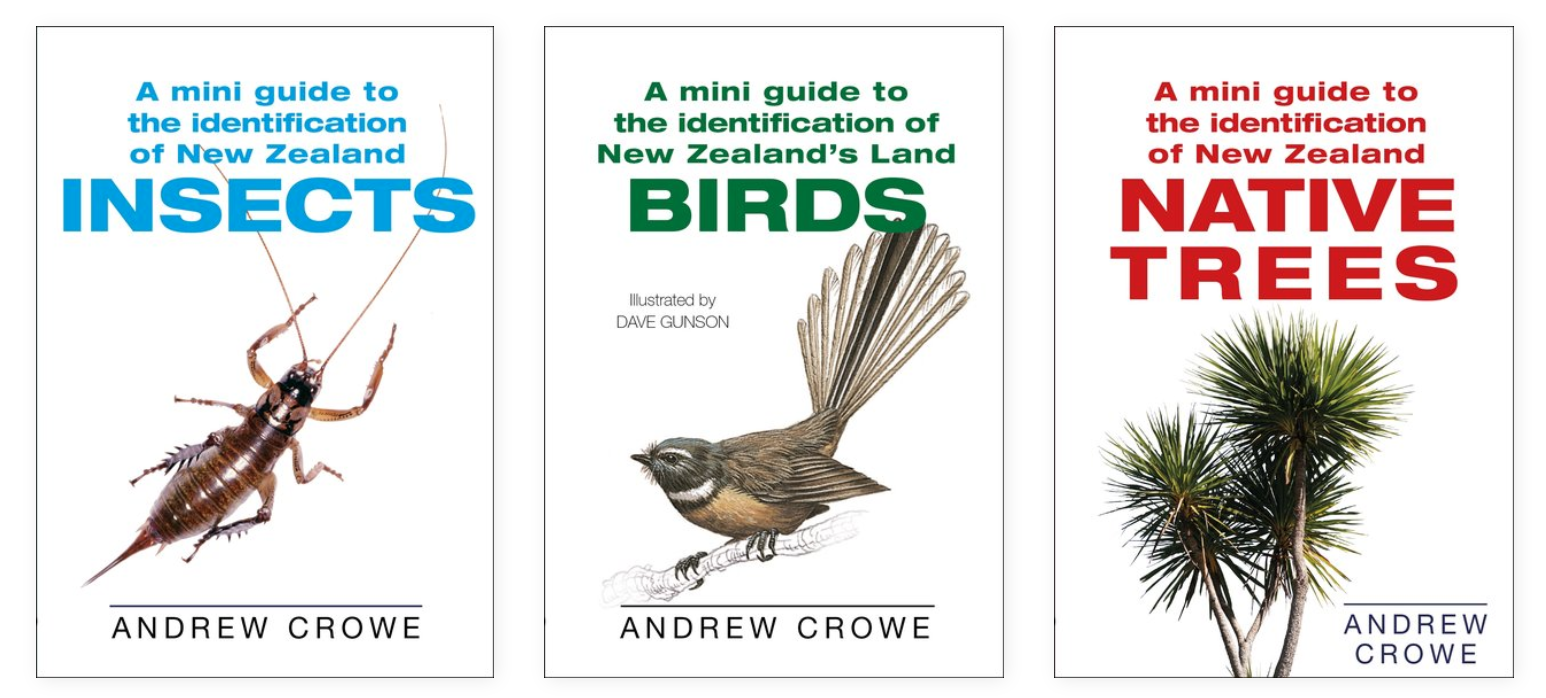
For an all-in-one guide, From Weta to Kauri: a guide to the New Zealand Forest (Janet Hunt and Rob Lucas, Random House) is concise and relatively compact, covering invertebrates, lizards, tuatara, frogs, bats, birds, fungi, mosses, liverworts, ferns, herbs, grasses, vines, epiphytes, mistletoes, flowering plants, and cone-bearing plants. It contains easy-to-reference information, accompanied by plenty of colour photographs. A ruler on the back is conveniently placed for measurements right then and there in the bush. I desperately wish for ‘weta’ in the title to be spelt ‘wētā’. The authors’ approach to macrons has been carefully explained in the introduction, but I have to disagree. I think that anglicised versions of names like tūī and kererū (“tui” and “kereru” respectively) do nothing to encourage appreciation of the original names or the normalisation of te reo. The correct Māori spellings of common species names are represented in headings throughout the book.
Guidebooks are great out in the wild and for figuring out what we’re looking at, but I think both kids and adults are interested in more than just the name. Maybe we read about something that fascinates us enough to go out looking for it. Gillian Candler and Ned Barraud have put out a fabulous collection of books – both together and separately – which serve to give that extra detail in a wonderfully digestible way.
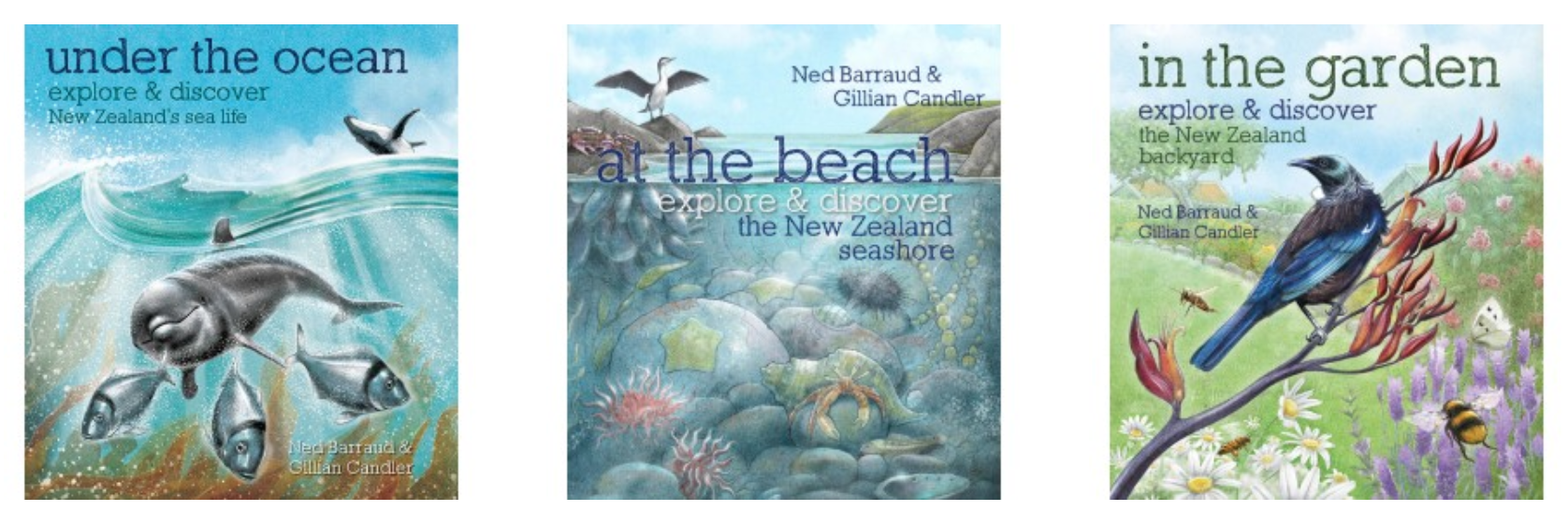
Animals of Aotearoa: explore and discover New Zealand’s wildlife (Potton & Burton) is a broad collection of creatures encompassing our more well-known and charismatic species, as well as introduced mammals and microscopic animals. Each species depicted has a sentence or more of habitat information and/or interesting facts.
The explore & discover series of six books also looks at species by habitat, which makes perfect sense. These are the species you might encounter in a certain place: at the beach, in the garden, under the ocean, in the bush, and up the river. Beautifully illustrated and with poetic prose and delightful facts, any of these are a wonderful addition to a nature-loving household.
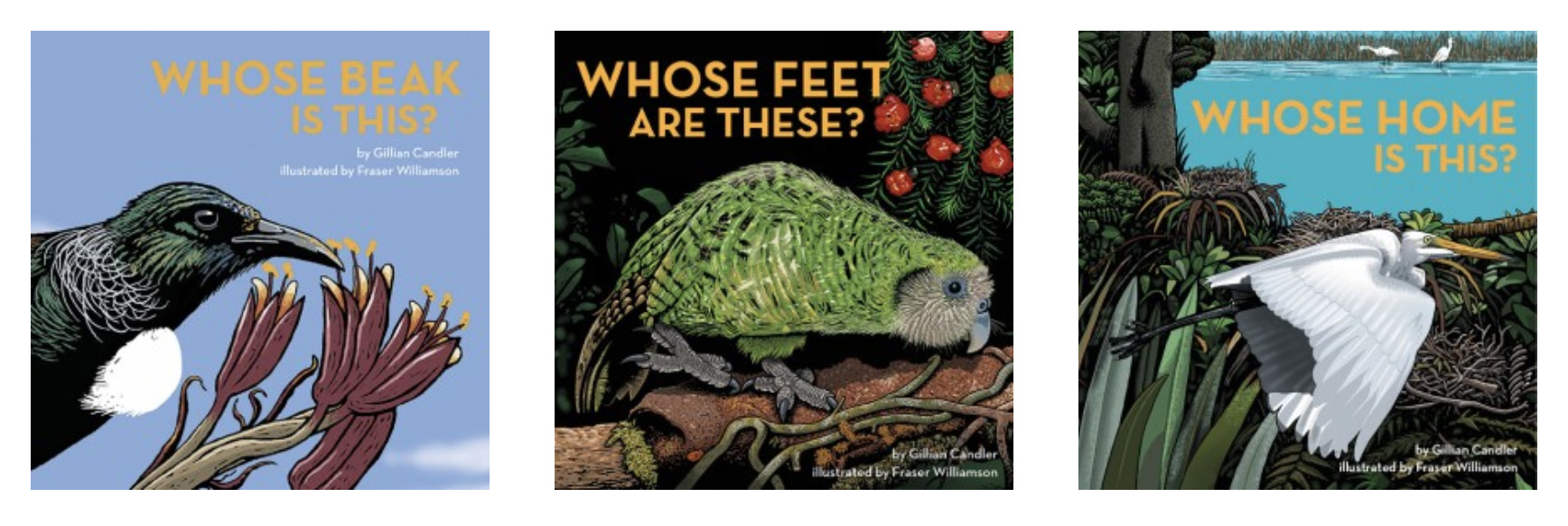
Another charming series is Gillian Candler’s Whose Home Is This? and others, illustrated by Fraser Williamson. Each page asks whose home is shown, and turning the page reveals the answer. I love the language used and the little tidbits of information sprinkled throughout. Whose Feet Are These? and Whose Beak Is This? are equally lovely.
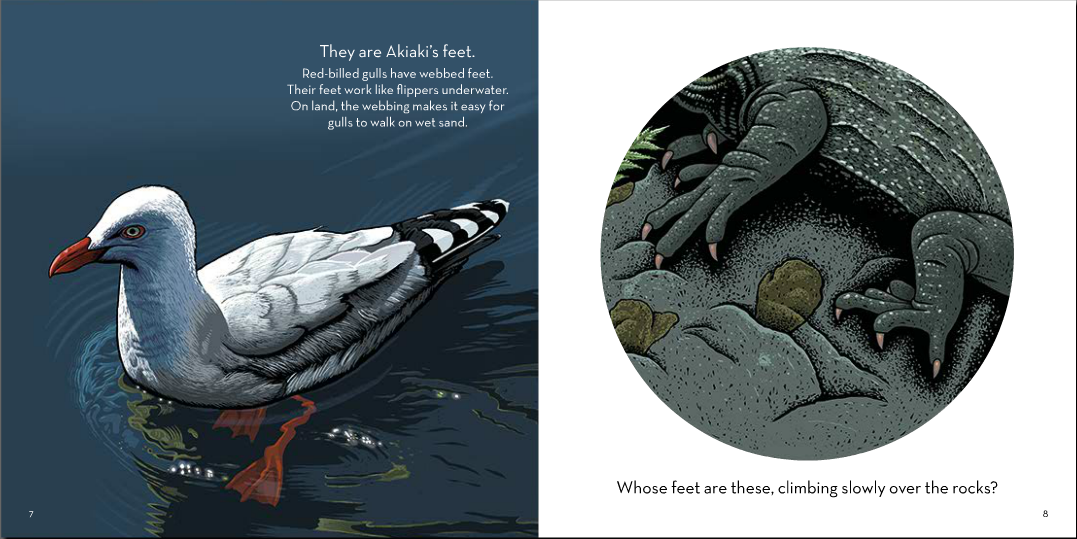
Ned Barraud’s New Zealand’s Backyard Beasts (Potton & Burton) has a similar feel to Animals of Aotearoa but focuses on what could be right out your backdoor. Learning to appreciate what is around you can feel hard if you aren’t lucky enough to live in the middle of the bush or live close to spaces ripe for wildlife hunting. But Backyard Beasts shows the incredible array of creatures that might be down the damp side of your house, wriggling in the dirt, or hiding under your recycling bin. Given that invertebrates make up 97% of all species on earth, they are the most exciting things you are likely to find right outside (or even inside!) your house.
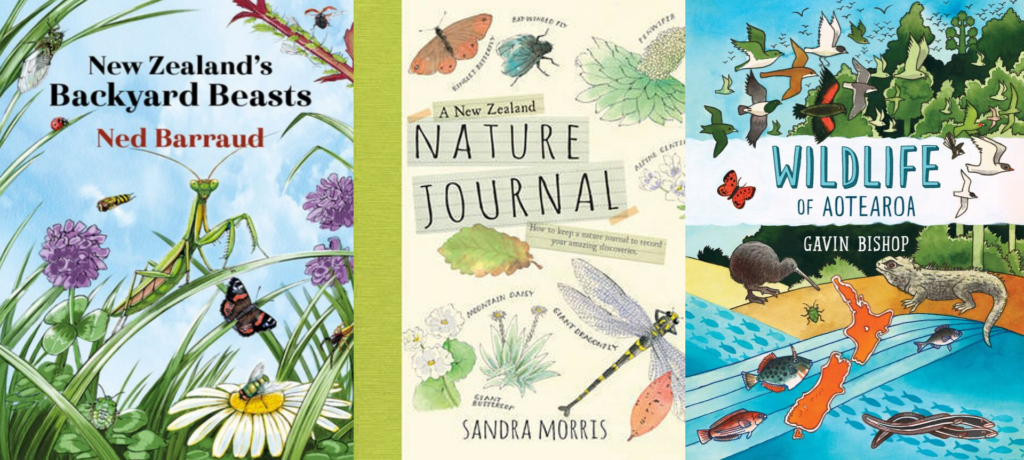
Dave Gunson is another writer and illustrator of New Zealand nature books for children and he has quite a collection. The All About New Zealand series covers plants, garden wildlife, freshwater wildlife, birds, sea life and more. Pleasingly, these books go more in depth about each species than some of their counterparts: using a larger font on a white background making it more accessible for younger readers. He has also put out native species colouring and activity books, as well as a series of board books. My only qualm with Dave Gunson’s books is the tendency to forgo the Māori name of species and, where they have been used, an inconsistent approach to macrons.
Moving in a slightly different direction, Sandra Morris’ A New Zealand Nature Journal (Walker) is a beautiful handbook to creating your own record of nature experiences. Taking the time to draw and write about what you see forces you to look closer, take notice, see more. It suggests simple ideas of how to capture your observations, all enchantingly illustrated. And it might not be the first thing that comes to mind when you consider nature books for kids, but I think it’s such a fantastic way to combine art and science and nature all in one.
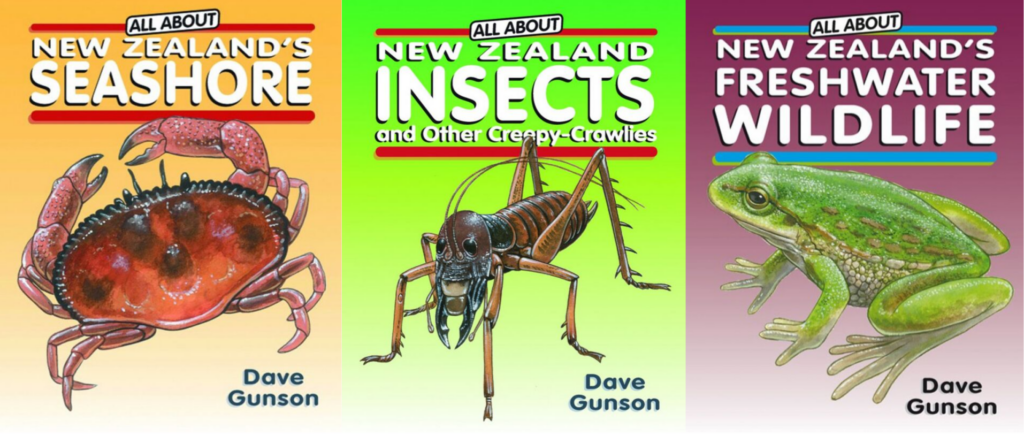
And finally, this recent release is a welcome addition to bookshelves everywhere: Gavin Bishop’s Wildlife of Aotearoa (Penguin). Following the large-format style of Aotearoa: The New Zealand Story, this stunning new hardback seamlessly weaves its way through New Zealand’s fauna, from ocean to forest, morning to night. The book starts and finishes with kūwharuwharu/longfin eel, subtly showing the breadth of their journey as you journey through the pages.
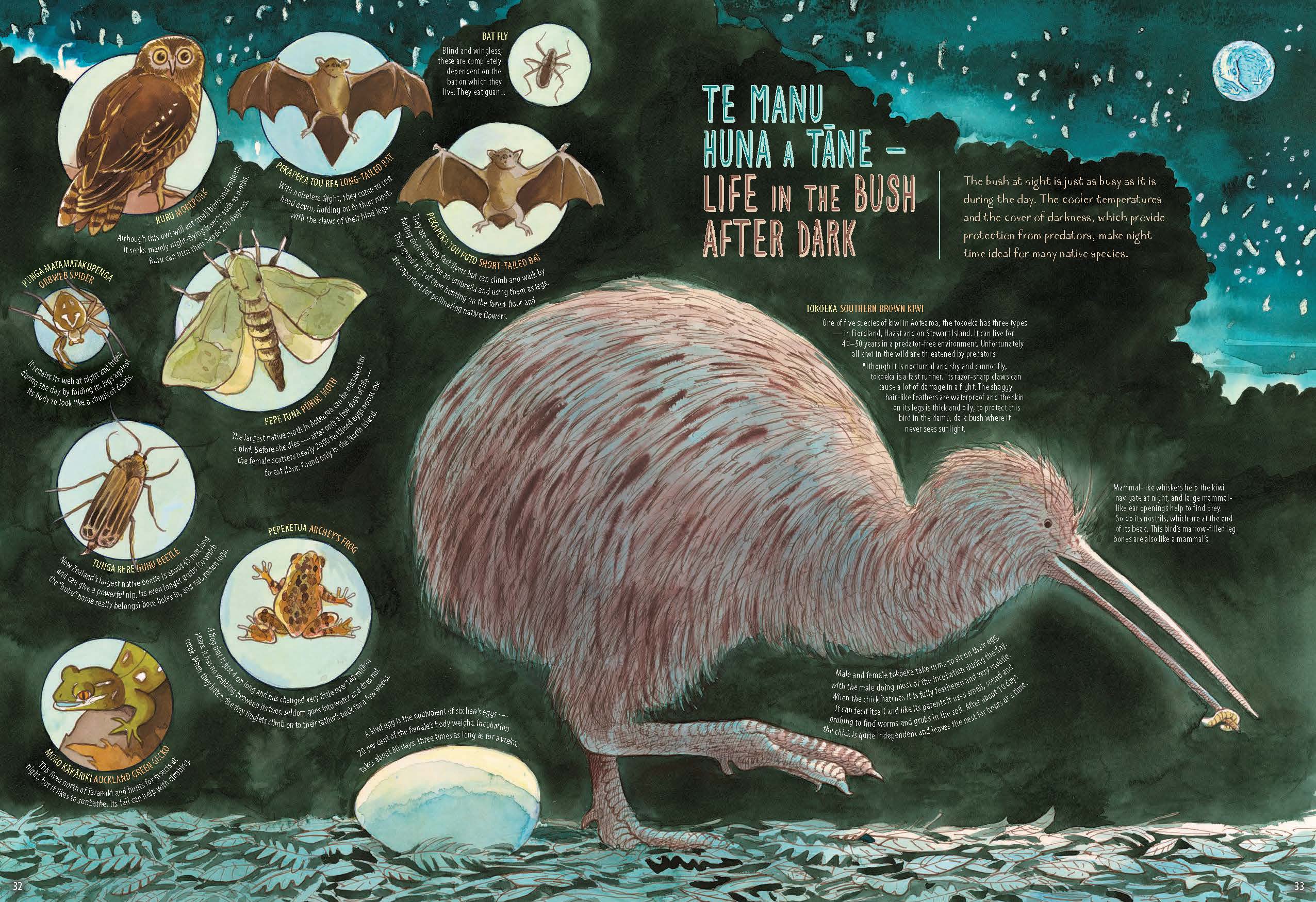

Linda Jane is the lead editor of The Sapling, a parent, and a writer of picture books, poetry, and other tidbits. Her background is varied, including work in ecology, environmental education, summer camps, and a community newspaper. She is Singaporean-Pākehā, queer, and loves leaping into cold bodies of water.



